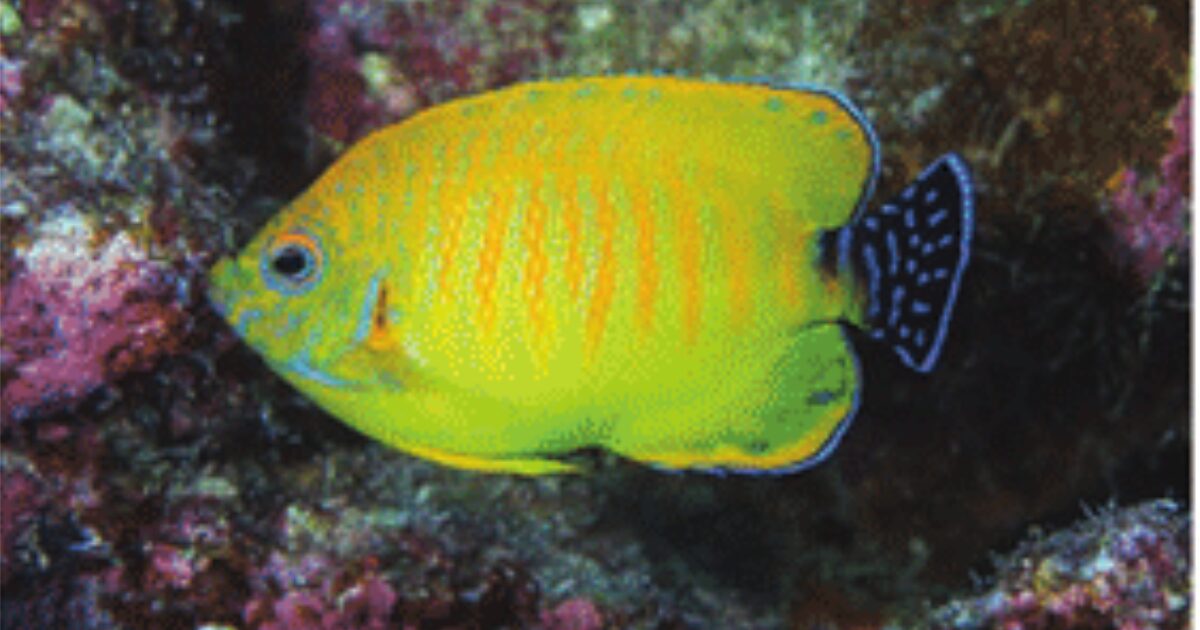Dwarf angelfish deliver big personality and vibrant beauty on a small scale. As their name implies, dwarf angels max out much smaller than their larger angelfish relatives, typically reaching just 2-6 inches long depending on the species. What they lack in stature, they compensate for with stunning colors, endearing activity, and captivating charm.

While most freshwater angelfish species grow quite large and require sizable aquariums, dwarf varieties open up exciting new possibilities for fish keepers without massive tanks. Dwarf angels encompass both petite freshwater species as well as a multitude of dwarf angelfish saltwater varieties perfectly suited for nano reef aquariums. This guide will provide an overview on successfully keeping these pint-sized beauties, including diving into the different dwarf angelfish types available, dwarf angelfish saltwater and freshwater care, ideal tank size considerations, behaviors to expect, and their suitability for community aquariums and reef habitats. Whether you’re a seasoned marine aquarist or a freshwater hobbyist looking to branch out, dwarf angels could be the perfect addition to your existing setup.
Dwarf Angelfish Freshwater- Pterophyllum leopoldi.
One of the few true dwarf angelfish freshwater species is Pterophyllum leopoldi. While often confused with juvenile forms of larger angelfish, P. leopoldi is a uniquely small species native to the Amazon River basin.
Dwarf Angelfish Freshwater Environments
In the wild, Pterophyllum leopoldi (Freshwater Dwarf Angelfish) inhabits the shallow, slow-moving tributaries of the Amazon River system. They are found among dense vegetation like submerged roots and aquatic plants. These heavily planted areas provide ample hiding spots and foraging sites. Water conditions are very soft, acidic, and stained with tannins from decomposing leaf litter. The dim lighting, shaded by a rainforest canopy, helps bring out their reflective scales. P. leopoldi likely occupies niches similar to other small cichlids and tetras in its native range, feeding on small insects, crustaceans and plant matter. Recreating its natural biotope in captivity provides the best chance of success with this delicate dwarf angelfish species.
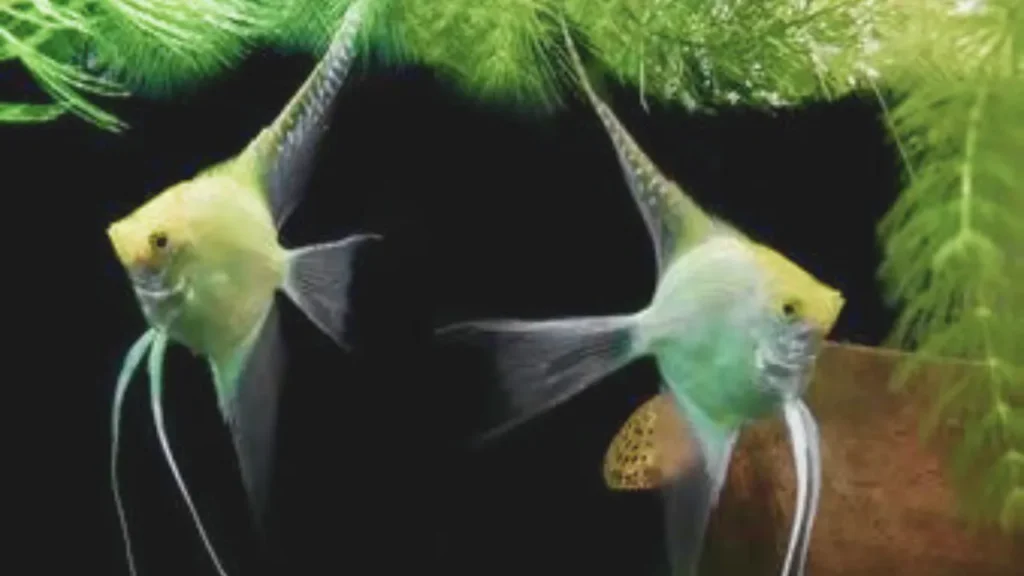
Discovery
Dwarf Angelfish Freshwater was first identified in the Rio Orinoco drainage of Venezuela in 1963. It was named in honor of explorer Professor Leopold III of Belgium. These dwarf angels likely inhabit slow moving tributaries throughout the upper Amazon region.
Size and Appearance
One of the smallest angelfish species, P. leopoldi grows to just 2-3 inches in length. It exhibits transparent fins and a light yellowish-silver base body color with faint vertical striping. Dark edges trim the dorsal, anal, and caudal fins. Eye color ranges from gold to reddish.
Care Requirements
P. leopoldi thrives in soft, acidic water between a pH of 5.5-7.0 and temperature of 75-82°F. Provide heavy vegetation and dim lighting. They are challenging to keep long term, requiring live foods, excellent water conditions, and relatively advanced care.
Availability in the Aquarium Trade
Due to their delicate nature, Dwarf Angelfish Freshwater remains fairly uncommon among aquarists. Wild caught specimens occasionally enter the trade. Several Asian farms have selectively bred captive specimens, but they continue to be one of the rarest dwarf angelfish species found in the hobby today.
So in summary, P. leopoldi offers a true dwarf-sized alternative to larger angelfish, though their demanding care limits their popularity primarily to specialty dwarf cichlid enthusiasts.
While their petite size is appealing, freshwater dwarf angels tend to be shy and sensitive to water conditions. Success keeping them long-term takes an experienced aquarist able to cater to their specific needs. But they offer a unique alternative to the commonly available large angelfish species.
Dwarf Angelfish Saltwater.
In contrast to the few freshwater species, aquarists have loads of dwarf angelfish saltwater options. Ranging from just 2-6 inches in length depending on the species, dwarf marine angelfish make a colorful addition to nano and small reef tanks.
Compared to their larger angel relatives that require 125+ gallon tanks, most dwarf saltwater angels only need 30-75 gallons. This makes them suitable for aquarists with average home tank sizes. Just be sure to choose species on the smaller end of the dwarf angel spectrum for tanks under 55 gallons.
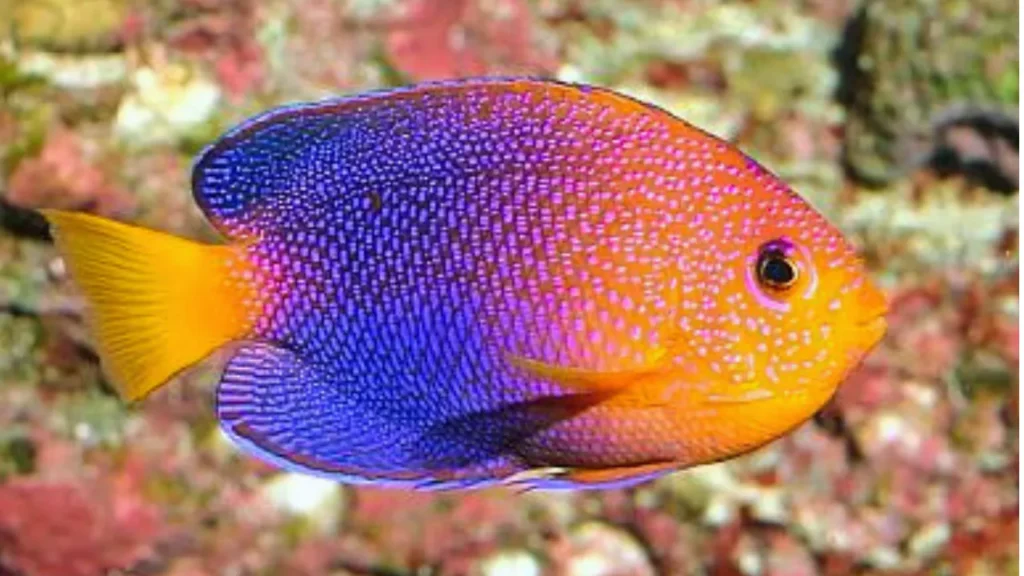
Beyond smaller housing requirements, care and feeding of dwarf saltwater angels generally follows the same recommendations as full-size species. Pay special attention to water quality, providing a varied meaty diet including marine angelfish preparations, mysid shrimp, and vitamin supplements.
With hundreds of species to choose from, dwarf saltwater angels offer hobbyists an exciting range of patterns, colors, and behaviors without demanding giant tank space.
Dwarf Angelfish Saltwater Habitats
Most dwarf angelfish saltwater species dwell in the warm, shallow reef regions of the Indo-Pacific. They frequent outer reef slopes, lagoons, and sheltered bays around coral formations. Rocks, caves, and coral outcroppings create hiding places and territories. Strong water movement and currents deliver food while reef structure serves as protection.
Habitat Elements to Replicate
For both freshwater and saltwater dwarf angels, focus on replicating elements like dim lighting, ample plants/decor, rockwork, and proper water parameters. Afford them plenty of areas to claim as their own territory or retreat. Thriving dwarf angels rely heavily on their habitat providing suitable conditions and enrichment.
Dwarf Angelfish Care Essentials
While dwarf angels differ significantly between freshwater and marine species, some universal Dwarf Angelfish Care essentials apply to keeping them healthy in any aquarium:
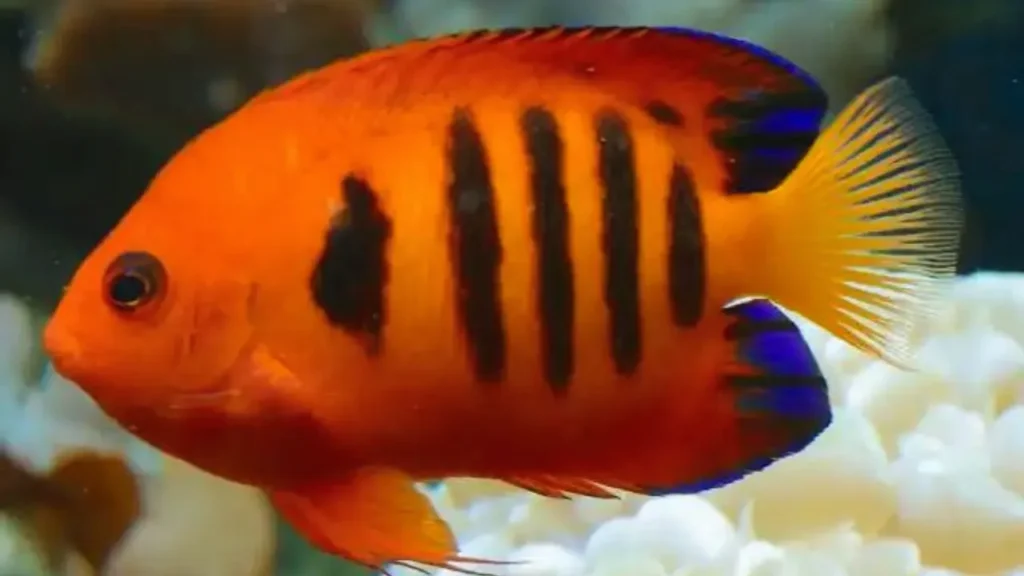
Proper Water Quality Parameters
Monitor water parameters like pH, temperature, and salinity closely to provide the ideal environment. Perform regular partial water changes and filter maintenance.
Dietary Needs
Feed a carnivore-focused diet with angelfish preparations, mysid shrimp, vitamin supplements, and high-quality protein like marine fish, scallops, and shrimp.
Compatible Tankmates
Choose peaceful tankmates of similar size and temperament. Avoid aggressive species. Introduce tankmates cautiously and have backup housing if issues emerge.
Dwarf Angelfish Behavior
One of the delights of dwarf angelfish is observing their charming behaviors. Here are some traits to expect from your pint-sized angels:
- Peaceful overall, with nipping potential during spawning
- Camouflage experts, blending into coral and decor
- Perching on structures or nestled within tank decoration
- Bold personalities and feeding eagerness once acclimated
- Fascinating courtship rituals prior to spawning
Knowing their natural behaviors prepares you for the antics of your dwarf angel. Provide ample shelters and observe their interactions to prevent aggression issues. Then sit back and enjoy their captivating aquatic acrobatics!
Dwarf Angelfish Tank Size.
Dwarf angelfish Tank size differ between species, as well as their freshwater vs. saltwater homes. Use these general guidelines:
- Freshwater dwarf angels: Minimum 20 gallon heavily planted
- Saltwater dwarf angels under 3″: 30 gallon or more
- Larger saltwater dwarf angels up to 6″: 55+ gallon tank
Ideally, choose the largest tank possible to provide ample horizontal swimming space. Tall tanks are not ideal, as most dwarf angels utilize the length of the aquarium more than height. And don’t forget to factor in the bioload of tankmates when determining tank capacity.
Are Dwarf Angelfish Reef Safe?
A key question for saltwater aquarists is whether dwarf angelfish reef safe or not. The answer is a qualified yes.
Most dwarf marine angel species do not pose a major threat to corals or invertebrates when housed in an appropriate sized habitat. Their small mouths limit the damage they can inflict. However, nipping potential increases during spawning periods, when eggs and fry may become targets.
Introduce dwarf angels to an established reef tank gradually. Closely supervise their interactions with corals and sessile invertebrates at first. Have a plan to rehome angels that prove troublesome. Overall though, dwarf marine angels make stunning additions to nano reef tanks when selected carefully.
Popular Dwarf Angelfish Species
With thousands of angelfish species spanning the oceans, dwarf angels offer remarkable diversity for aquarists to explore. Here are profiles of some top dwarf varieties:
Flameback Pygmy Angel
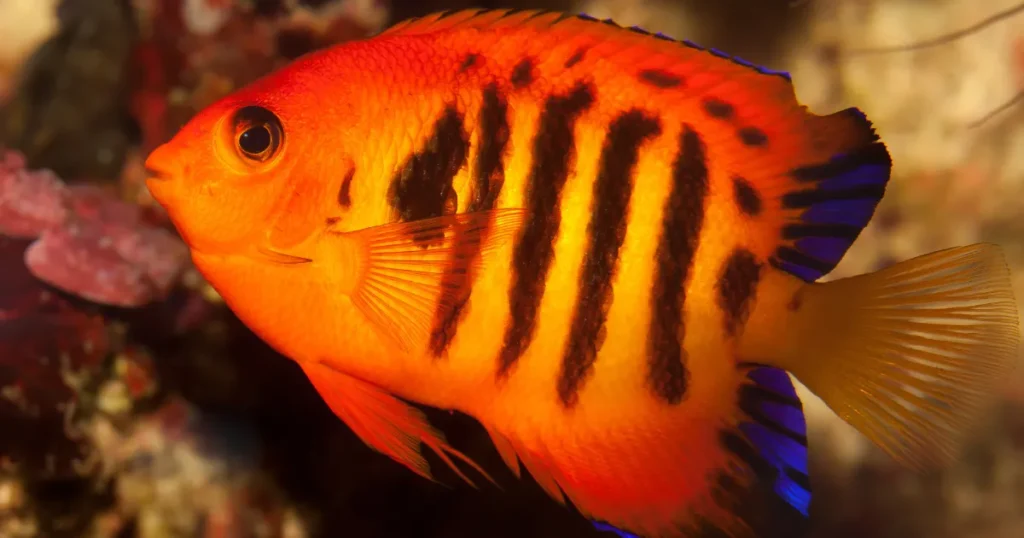
Centropyge acanthops
At just 2.5 inches long, the flameback pygmy angel is one of the smallest saltwater species available. Vibrant reddish-orange coloration covers the rear half of these tiny beauties. Peaceful and active, they bring constant motion and beauty to nano tanks.
Lemonpeel Angelfish
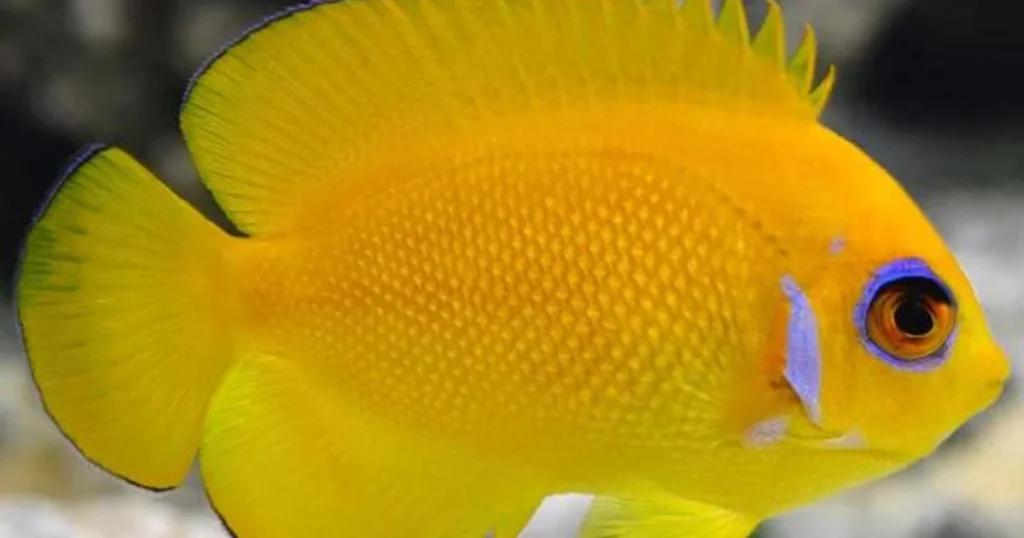
Centropyge flavissima
Butter yellow bodies contrast elegantly with the thin blue trim on their fins. Reaching 3-4 inches, the lemonpeel angel dazzles against colorful corals. This hardy dwarf species adapts readily to aquarium life.
Multibar Angelfish
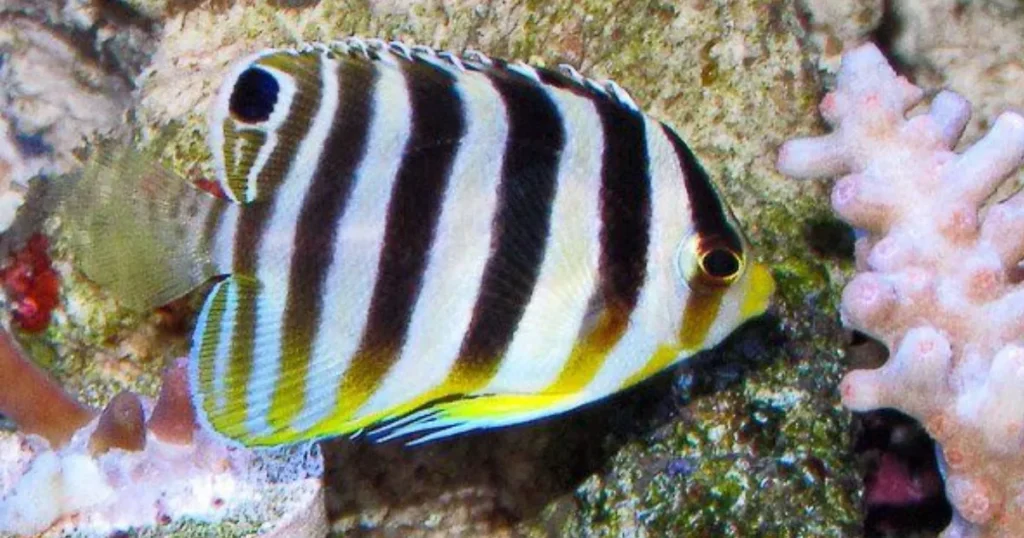
Paracentropyge multifasciata
Bold black and white bands stripe these active 4 inch angels from head to tail. They greedily devour meaty foods and bring constant activity to reef habitats. Their bold patterns make them easy to spot.
Conclusion
For aquarists seeking to add the beauty of angelfish on a smaller scale, dwarf varieties open up exciting possibilities. Ranging from shy freshwater Microscalapia to scores of reef safe saltwater species, dwarf angels allow fishkeepers of all levels to enjoy these charismatic fish even in relatively modest tank sizes. Do your research, select suitable species for your setup, and be prepared for years of enjoyment watching your petite angels interact and explore their aquatic world.
FAQs.
How big do dwarf angelfish get?
Dwarf angelfish typically reach 2-6 inches in full adulthood depending on species. This is significantly smaller than the 12-15 inch length of larger angelfish.
What size tank do I need for dwarf angelfish?
For a pair of smaller dwarf angel species under 3″, a 30 gallon tank is sufficient. Larger dwarf varieties up to 6″ need a minimum of 55 gallons.
Are there freshwater dwarf angelfish species?
There are a very few true freshwater dwarf angelfish, mainly from Africa, such as Microscalapia sp. But they are challenging to find and keep long-term.
Can I add dwarf angelfish to my reef tank?
Most dwarf marine angels can be added to reef tanks with caution. Monitor for nipping, especially during spawning periods. Have a backup plan if they disturb corals.
What do dwarf angelfish eat?
Dwarf angels need meaty foods including mysis shrimp, vitamin-enriched angelfish preparations, frozen seafood, and supplements like spirulina.
Why is my dwarf angelfish hiding all the time?
Excess hiding indicates stress. Ensure water parameters are stable, reduce tank aggression, and provide ample shelters and plants for security.
How do I acclimate new dwarf angelfish to my tank?
Use a slow drip acclimation over 1-2 hours, gradually adding tank water to the transport bag. Dim lights, limit disturbances, and consider quarantine.
What are signs of a healthy dwarf angelfish?
Clear eyes, full fins, vivid colors, active swimming and feeding, and normal breathing show health. Watch for fading, clamped fins, bloating or skin issues.
Can dwarf species crossbreed with larger angelfish?
No, dwarf freshwater and saltwater angelfish cannot successfully crossbreed with larger angel species. They are separate species with different genetics.

